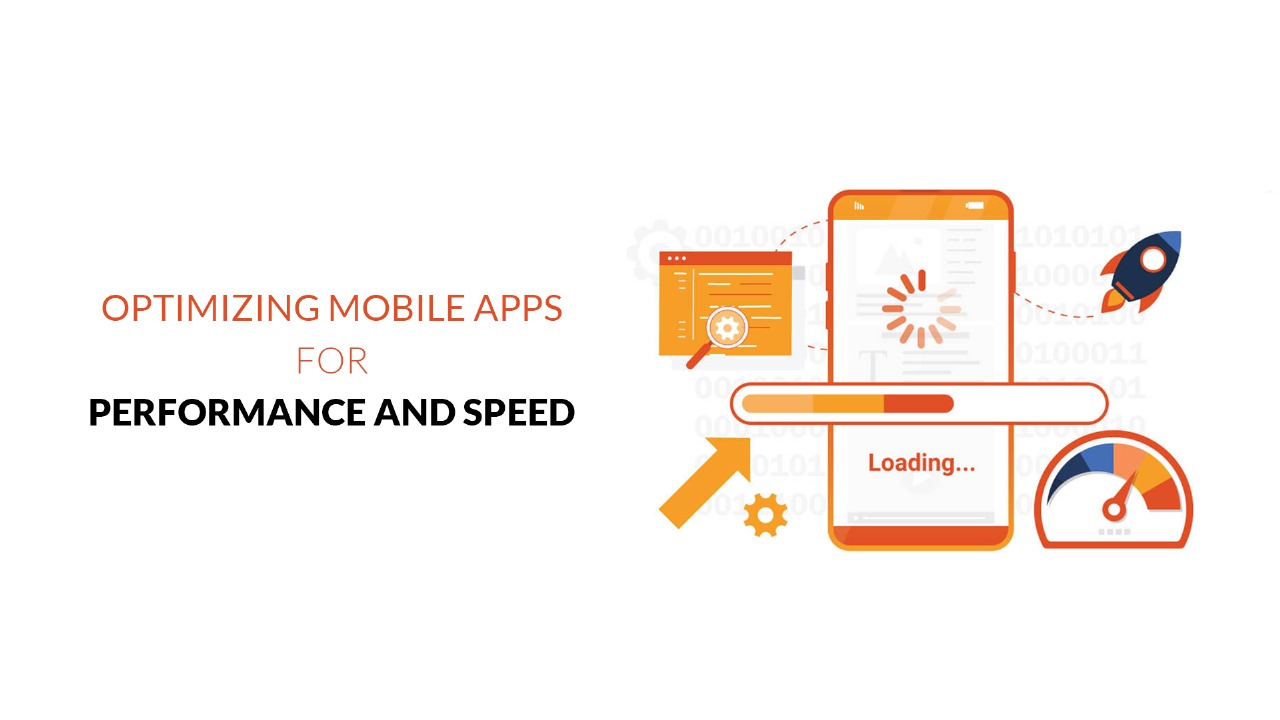31 July 2024
Optimizing Mobile Apps for Performance and Speed

Introduction
In today's fast-paced digital world, users expect mobile apps to be fast and responsive. A laggy or slow app can lead to user frustration, negative reviews, and ultimately, uninstalls. Optimizing mobile apps for performance and speed is crucial to ensure a smooth user experience and maintain user engagement. This blog explores effective strategies and best practices for optimizing Mobile Apps.
Understanding the Importance of Performance Optimization
Performance optimization isn't just about making your app faster; it's about creating a seamless user experience. Here are some key reasons why performance optimization is essential:
- 1. User Retention: A well-performing app keeps users engaged and satisfied, reducing the likelihood of uninstalls.
- 2. App Store Rankings: App performance impacts ratings and reviews, which in turn affect your app's ranking in app stores.
- 3. Battery and Data Usage: Optimized apps consume less battery and data, making them more appealing to users.
Key Strategies for Optimizing Mobile App Performance
- 1. Efficient Code Practices:
- Minimize the use of memory and CPU-intensive operations: Avoid unnecessary computations and optimize algorithms for efficiency.
- Use asynchronous programming: Perform tasks like network calls and database queries asynchronously to prevent blocking the main thread.
- 2. Optimize Network Calls:
- Reduce the number of network requests: Combine multiple requests into a single one when possible.
- Use caching: Implement caching strategies to store frequently accessed data locally, reducing the need for repeated network calls.
- Compress data: Use data compression techniques like GZIP to reduce the size of network payloads.
- 3. Optimize Images and Media:
- Use appropriate image formats: Choose the right image format (e.g., JPEG for photos, PNG for graphics) to balance quality and file size.
- Lazy loading: Load images and media content only when they are needed, rather than all at once.
- 4. Database Optimization:
- Efficient queries: Write optimized queries and use indexes to speed up database operations.
- Local storage: Use local storage solutions like SQLite or Room for frequently accessed data to reduce the need for network calls.
- 5. Minimize App Launch Time:
- Load essential features first: Ensure that the most critical features and content are loaded first to make the app usable as quickly as possible.
- Defer non-essential tasks: Perform non-essential tasks, such as loading secondary data, after the initial app launch.
- 6. Memory Management:
- Avoid memory leaks: Regularly check for and fix memory leaks to prevent your app from consuming unnecessary memory.
- Optimize resource usage: Release unused resources and objects to free up memory.
- 7. Implement Performance Monitoring:
- Use analytics tools: Integrate performance monitoring tools like Firebase Performance Monitoring to track app performance and identify bottlenecks.
- Regular testing: Continuously test your app on different devices and network conditions to ensure optimal performance.
Tools for Performance Optimization
Several tools can help you optimize your mobile app's performance:
- 1. Android Studio Profiler: Provides real-time data on CPU, memory, network, and energy usage to help you identify performance issues.
- 2. Xcode Instruments: Offers various profiling tools to analyze the performance of iOS apps, including memory usage, CPU activity, and network performance.
- 3. Firebase Performance Monitoring: Tracks performance metrics such as app startup time, network request latency, and screen rendering time.
- 4. New Relic Mobile: Provides detailed insights into app performance, including crash analysis and user interaction tracking.
Conclusion
Optimizing mobile apps for performance and speed is essential for delivering a smooth and responsive user experience. By implementing efficient code practices, optimizing network calls and media, managing memory effectively, and using performance monitoring tools, you can ensure that your app performs well across various devices and network conditions. Prioritizing performance optimization not only enhances user satisfaction but also contributes to better app store rankings and user retention.


 INDIA
INDIA USA
USA











